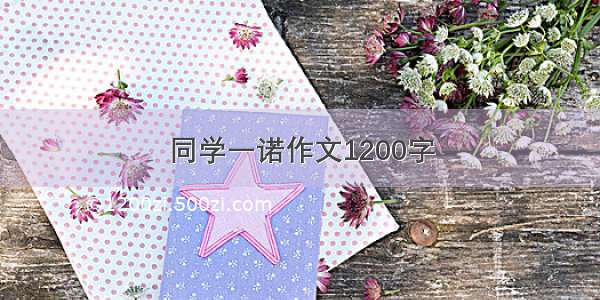
一年级英语是孩子初次接触外语学习的阶段,通过掌握基本的英语单词、句子和语法,能够为将来学习更高级的英语知识打下基础。学好一年级英语对孩子的语言发展、认知能力和综合素养的提高都具有重要。今天小编就来分享一下关于小学一年级英语知识点归纳。
文章目录
小学一年级必会英语单词大全
小学一年级英语句型汇总
小学一年级学英语语法
小学生常用英语日常用语100句
如何有效提高孩子的听力与口语能力
小学一年级必会英语单词大全
Module 1 Word List
hello你好
hi晦
goodbye再见
bye(口语)再见
I’m=I am我是
Module 2Word List
good好的
marning早晨, 上午
what’s=what is 是什么
my我的
name名字
a一(个,件…)
bird鸟
panda熊猫
boy男孩
girl女孩
afternoon下午
Module3 Word List
one 1
two 2
three 3
four 4
five 5
six 6
seven 7
eight 8
nine 9
ten 10
yes 是
no 不,不是
Module4 Word List
green 绿色
black 黑色
blue 蓝色
white 白色的
red 红色
yellow 黄色
colour 颜色
ball 球
Module6 Word List
this 这个
our 我们的
classroom 教室
desk 桌子
and 和
teacher 老师
cat 猫
dog 狗
that 那个
Module7 Word List
school bag书包
pen笔
ruler尺
book书
pencil 铅笔
pencil-box铅笔
eraser橡皮
crayon蜡笔
Module8 Word List
look看
fox 狐狸
kite 风筝
house房间
box盒子
Module9 Word List
how old几岁
you’re=you are你是
happy高兴的
birthday生日
thank谢谢
for为
welcome欢迎
Module10 Word List
where’s=where is在哪里 in在……里 hat帽 on在……上
under在……下
bed 床
balloon气球
doll玩具
bear熊
小学一年级必会英语单词大全
主要单词:
this morning 今天上午 this afternoon 今天下午
this evening 今天晚上 next week 下周
tomorrow 明天 tonight 今晚
post card 明信片 comic book漫画书 newspaper报纸
主要句子:
What are you going to do on the weekend?你周末打算做什么?
I’m going to visit my grandparents this weekend?这个周末我打算去看望我的外祖父母。
Where are you going this afternoon? 你今天下午打算去哪里?
I’m going to the bookstore.我打算去书店。
What are you going to buy?你打算去买什么?
I’m going to buy a comic book.我打算去买一本漫画书。
小学一年级必会英语单词大全
1、动词变为动名词的规则:
动词变为动名词,即是动词加ing。一般要遵循以下三条规则:
(1)一般情况下,在动词的后面直接加ing。如:play―playing read―reading do―doing go―going
(2)以不发音的字母e结尾的动词,要去掉不发音的字母e,再加ing。如:write―writing ride―riding make―making dance―dancing
(3)以单元音加单辅音结尾的重读闭音节,要双写最后一个辅音字母,再加ing。如:run―running swim―swimming put―putting sit―sitting
2、关于第三人称单数:
动词变为第三人称单数形式的规则:
(1)在一个句子中,如果主语人称既不是你,也不是我,而是另外的一个人,这时的人称叫做第三人称单数。
(2)在第三人称单词的句子中,动词要使用第三人称单词形式。
(3)动词变为第三人称单数形式,要遵循以下规则:
①一般情况下,在动词的后面直接加s。如:
read–reads make―makes write―writes
②以字母s, x, o , sh , ch结尾的动词,在词尾加es。如:do―does wash―washes teach―teaches go―goes pass―passes
③以y结尾的动词分为两个情况,以元音字母加y结尾的动词,在词尾直接加s。如:play―plays buy–buys
以辅音字母加y结尾的动词,要把y变为i,再加es.如:study–studies
④以f , fe结尾的名词,先把f,fe变为v,再加-es.
⑤特殊变化:have–has
(4)在一个第三人称单数的句子中,只要句子中出现了does或者其否定形式doesn’t.该句子中的其他动词就要使用原形。
(5)第三人称单数的肯定句在变为否定句时,在动词的前面加doesn’t. 动词恢复原形。如:he lives in Beijing.—he doesn’t live in Beijing.
(6) 第三人称单数的陈述句在变为一般疑问句时,用does开头,后面的动词也要变为原形。如:he lives in Beijing.—Does he live in Beijing?
3、注意几个单词的变化:
hobby(复数形式)-hobbieshave to(同义词)-mus
same(反义词)—differentlook the same 看起来一样
4、几种时态的比较:
5、city 城市 county 国家或者乡村 province 省
小学一年级英语句型汇总
UNIT 1
What \ What’s
What number( is it)?
It ’ s (six0.-12)
What color ( is it) ?
It ’ s blue(red. 、green 、blue 、pink 、orange 、purple 、brown、black)
What’sthis?
It ’ s a pencilbook.(、crayon
pen、ruler )
、pencil
、notebook
、book bag、pencil
case 、
What’ s your ame?n
I’ m Donny. How are you?
Fine,thank you.(Very well,thank you.)
Stand up 起立 Sit down 坐下
Open your book 翻开书籍
Close your book 合上书籍
Take out your book
取出版本
Put away your book
收起书籍
UNIT 2
He’ sShe’s
Who is he?
He’s my brother.( father
、big brother
、little brother
、
grandfather)
Who is she?
She’s my sister.
(mother 、big sister
、little
sister
、grandmother
)
Thank you.
You’re welcome.
Are you ready?
Yes.
My name is xxxxxxx.
I am a student.
I ’mfrom China.
This is my father. This is my brother.
This is my mother. This is my sister.
Hello!
How are you?
Nice to meet you!
Walk 走路
Run
跑步
Hop单脚跳跃 Turn around
Skip
转圈 Stop
互换脚跳跃
停下
UNIT 3
I like \ I don ’ t like
I like chicken 。(rice 、chicken 、cake、candy、water 、juice 、milk 、
tea )
I don’t like chicken.
Do you like chicken?
Yes,I do.
No,I don’t.
I’m hungry.
Me too. Let’s eat.
I’m thirsty.
Have some juice.
Eat the candy 吃糖
Drink the water
喝水
Pass the chicken
传 /
递鸡肉
Take some chicken 拿点鸡肉
Pour the milk
倒牛奶
Cut the cake
切蛋糕
Touch my body 触摸身体
(eye、2eyes 、ear 、2ears 、mouth、shoulder 、2shoulders 、finger 、
10fingers 、toe 、 10toes )
UNIT 4
This is \ Is this \Whose \Can I
This is a snake. (dog、cat 、rabbit 、hamster 、turtle 、bird 、fish 、
snake)
Is this a snake?
Yes,it is.
Is this a rabbit?
No,it’s not.
Whose bird is that?
It’s mine.
Can I hold your hamster?
Sure .
Pick up the hamster
拿起仓鼠
Put down the hamster
放下仓鼠
Feed the fish
喂鱼
Pet the rabbit
喜爱 /
抚摸兔子
Brush the cat
洗刷猫毛
Walk the dog
遛狗
UNIT 5
Sorry!
That ’ s OK!
Ouch!
Aye you all right?
I think so.
Can you swim?(skate,skateboard,fly a kite,draw,ride a bike,juggle,sing)
Yes, I can . /
No, I can
’ t .
I can swim.
/
I can
’ t swim.
Take off your shoes脱.鞋
Put on your skates穿.滑冰鞋
Get on your skateboard.踏上你的滑板
Get off your bike.下自行车
Jump in the pool.跳进游泳池
Kick your feet.用脚取水
Unit 6
Sorry, I ’ m. late
That ’ s OK.
Who’ s next?
Me.
What’ s that?
It ’ s a computer.(clock,board,door,desk,CD player,trash can,chair)
This is a door. That is a door.
What’ s this? It
’ s a desk.
What’ s that? It This is a computer.
’ s a chair.
That
’ s a clock.
What’ s this?
It
’ s a CD erplay.
What’ s that?
It ’ s a computer.
What’ s this?
It ’ s a trash can.
What’ s that?
It ’ s a door.
Go to the board.走到黑板那去
Go back to your seat回.你的座位
Turn on the computer.开电脑
Turn off the computer.关电脑
Write your name.写下你的名字
Throw away the trash.扔垃圾
UNIT 7
May I watch TV?
Sure, Go ahead.
What are you doing?
I’ m coloring.(reading,painting,dancing,watching TV,eating,sleeping,playing) Hurry up!
Wait a minute.
Do your homework.做功课
Brush your teeth.刷牙
Wash your face.洗脸
Put on your pajams.穿夹克
Get in bed.上床
Go to sleep.睡觉
UNIT 8
It ’ s hot.
Yeah.
Let ’splay basketball.
Good idea.
Do you have a glove?(bat,baseball,basketball,soccer ball,helmet,racket,paddle)
Yes, I do. / No, I don ’ t.
I have a glove.
I don ’ t have a glove.
Throw the ball.扔球
Catch the ball.接球
Kick the ball.踢球
Hit the ball.打球
Bounce the ball.拍球
Shoot the ball.投球
UNIT 9
What are you making?
A hat.
Where’ s thelue?g
Here it is.
How many pens do you have?(rulers,crayons,erasers,staplers,colored
pencils,markers,hats)
I have two pens.
Ihave one pen.
Draw a half circle.画一个半圆
Cut it out.剪下来
Paint it.涂上颜色
Fold it.围起来
Glue it.粘起来
Put on your hat.带上帽子
UNIT 10
What are you?
I’ m a ghost.(clown,skeleton,witch) Trick or treat!
Is it ready? Yes.
Who’ s next? Me.
Make a Jack-o’-lantern.(apple,donut,candy bar) Have a Halloween party.
UNIT 11
What’ s this?
It ’ s a star.
(Christmas tree,candy cane,santa claus,reindeer,sleigh,present,stocking) Wow! A baseball.
Thank you.
You’ re welcome.
Where’ s the tape?
Here it is .
问候
Hi! Hello!
Good morning ! Good afternoon ! Good evening!
辞别
Good-bye! Bye! Bye-bye!
Good night! Good evening!
See you later ! See you tomorrow!
致歉
Sorry. I am sorry.
That ’sOK. It ’sallright.
邀请
Would you like to go for a walk?
Will you come to my birthday party ?
Sure. / No, thanks.
恳求同意
May I go on a trip to Beijing?
Yes, you may. / No, you may not.
Sure. Certainly.
Can I use your pencil?
Of course ,you can.
祝福与庆祝
Have a lovely day!
Happy New Year!
You, too.
Happy birthday!
Thank you.
Good luck!
Merry Christmas!
The same to you.
约会
A: Would you like to play with me this afternoon?
B: Yes. When?
A: At 12:00.
B: See you then.
打电话
Hello! May I speak to Mr. Wood?
Yes , just a moment, please.
Hello! Is Kim there?
No !
Sorry, can I take a message.
就医
What’sthe matter?
I hurt my finger.
I have a headache。 I have a stomachache.
就餐
Would you like something to eat ?
Would you like something to drink?
Yes. I would like rice and chicken.
What would you like?
I would like some tea.
Would you like some more dumplings?
Yes, please. / No, thanks / thank you.
May I have some more soup? It ’sdelicious.
Sure / OK.
购物
A:Can I help you? May I help you?
B:Yes. I want to buy a dress, please. A: Here you are.
B:May I try it on? A: Ok!Sure.
B:It ’stoo big。It ’ s too small. A:This one is just right.
B: How much is it?How much are they?
A: One hundred yuan 。
B:It ’stoo expensive. But I like it. I ’takell it. It ’svery cheap.
问路
A:Excuse me. Do you know where is the ?
B: Yes. Go straight down the street. Turn left turn right.
供给帮助
A: Can I help you? May I help you?
B: Yes, please.
No, thanks.
小学一年级学英语语法
小学一年级英语语法1.现在进行时
表示正在发生的事情或进行的动作,常与now,listen,look等词连用,结构是主语+be动词(am, is, are)+动词ing.
如:It is raining now.
外面正在下雨
It is six o’clock now.
现在6点了
My parents are reading newspapers in the sitting room.
我父母正在客厅看报纸
Look! The children are having a running race now.
看!孩子们正在赛跑
问句将be动词移前,否定句在be动词后+not.
2.一般现在时
表示经常反复发生的事情或动作,常与often, usually, sometimes, always, every day(week year…) on Sundays等词连用。
结构是主语+动词原形;当主语为第三人称单数即he,she, it, Tom, my mother, the boy等词时,动词后加s或es.
如:We have an English lesson every day.
我们每天都要上英语课
Do the boys run faster than the girls? Yes, they do.
男孩比女孩跑的快吗?是的
问句借助于do, does否定句借助于don’t, doesn’t,后面动词一定要还原。
3.一般过去时
表示发生在过去的事情或存在的状态,常与just now; a moment ago; … ago; yesterday; last ( week; month; year; Monday; weekend); this morning等词连用。
结构是主语+be动词的过去式(was; were)或主语+动词的过去式。
注意:be动词与动词过去式不可同时使用。
如:My earphones were on the ground just now.
我的耳机刚刚还在呢。
Where were you last week? I was at a camp.
你上个星期去哪了?我去野营了
What did you do yesterday? I visited a farm
你昨天去干嘛了?我去参观农场了。
问句有be动词将be动词移前,没有be动词借助于did,后面动词还原;
否定句有be动词在后面加not,没有借助于didn't后面动词还原。
4.一般将来时
表示将要打算发生的事情或动作,常与tomorrow, next week(year; Tuesday…), this week( weekend ;evening; afternoon;…)today等词连用。结构是主语+be(am, is, are) going to + 动原或主语+will +动原。
如:What are you going to do tomorrow? I am going to have a picnic.
你明天要去干嘛?我要去野餐。
The childre are going to have a sports meeting next week.
孩子们下个星期将参加运动会。
Tom will/is going to see a play with his father this evening.
Tom今晚将和父母去看演出。
问句将be动词或will移前;否定句在be动词或will后加not.
5.情态动词
can; can’t; should; shouldn’t; must; may后一定加动词原形。
如:The girl can’t swim, but she can skate.
女孩不会游泳,但是会滑冰
Don’t talk in class, you should listen to the teacher carefully.
不要再课上说话,你应该认真听老师讲。
6.祈使句
肯定祈使句以动词原形开头;否定祈使句以don’t加动词原形开头。
如:Open the box for me ,please.
请为我打开盒子。
Liu Tao! Please get up earlier tomorrow.
刘涛,明天请早点起床!
Don’t walk on the grass!
不要在草地上走!
Helen! Don’t climb the tree,please.
海伦!不要爬树。
7.go的用法
去干嘛用go +动词ing
如: go swimming; go fishing;
go skating;
go camping;
go running;
go skiing;
go rowing…
8.比较
than 前用比较级;as…as之间用原级。
如:My mother is two years younger than my father.
我妈比我爸年轻两岁。
Liu Tao jumps as far as Ben.
刘涛跳得和本一样远。
9.喜欢做某事
用like +动词ing或like+ to + 动原。
如: Su Yang likes growing flowers.
苏阳喜欢种花。
The children like to play with lanterns at Spring Festival.
孩子们喜欢在春节去玩花灯。
10.想要做某事
用 would like +to+动原或want + to +动原。
例:I’d like to visit the History Museum.=I want to visit the History Museum
11.some
用于肯定句中,在否定句和问句中改为any,但当表示委婉语气时仍用
如:Can I have some writing paper? Would you like some orange juice?
12.代词
人称代词主格做主语用一般放在句首或动词前,主格分别是 I you he she it we you they。
宾格做宾语用,一般放在动词或介词后
如:Open them for me. Let us …, join me等。
宾格分别是me you him her it us you them。
形容词性物主代词放在名词前,不能单独使用,分别是my your his her its our your their
名词性物主代词相当于形物加名词,它只能单独使用后面不好加名词,分别是mine yours his hers its ours yours theirs。
13.介词
介词后要么不加动词,加动词只能加动词ing形式
如:be good at running;
do well in jumping;
14.时间介词
季节前,月份前用介词in
如:in summer;in March
具体的哪一天如星期几,几月几日用介词on
如:on Saturday; on the second of April; on Wednesday morning
在几点钟前用介词at
如: at a quarter to four;
只在上下午晚上用in
如:in the morning/ afternoon/ evening;
但在夜间用at night。
另:季节,月份和星期前不好加the.
15.名词复数构成的方法
有规则的有:
(1)直接在名词后加s
如orange—oranges; photo—photos;
(2) 以x, s, sh, ch 结尾的加es
如:box—boxes; glass—glasses; waitress—waitresses; watch—watches;peach–peaches
(3) 以辅音字母加y结尾的改y为i加es
如:study—studies;library—libraries; hobby—hobbies; family—families;
(4)以f, fe结尾的改f, fe 为v+es如:knife—knives; thief—thieves(注:以o结尾的我们学过的只有mango加es, mango—mangoes其余加s,)
不规则的有:
man—men; woman—women; people—people; child—children
16.动词第三人称单数的构成
(1)直接在动词后加s
如:run—runs; dance—dances
(2)以s,sh,ch,o结尾的加es
如:do—does;go—goes;wash—washes;catch—catches
(3)以辅音字母加y结尾的改y为i加es
如:study—studies; carry—carries;
17.现在分词的构成
(1)直接在动词后加ing
如:sing—singing; ski—skiing;
(2)双写词尾加ing
如:swim—swimming; jog—jogging;run—running;
(3)以不发音的e结尾的去e加ing
如:ride—riding; dance—dancing; make—making;
18.规则动词过去式的构成
(1)直接在动词后加ed
如:clean—cleaned; milk—milked; play—played;
(2)以e结尾的直接加d
如:dance—danced; taste—tasted;
(3) 以辅音字母加y结尾的改y为i加ed
如:study—studied;carry—carried;
(4)双写词尾加ed
如:stop—stopped; jog—jogged;
不规则的有:am,is—was; are—were; do,does—did; have,has—had; go—went; meet—met; sit—sat; see—saw; get—got; tell—told; run—ran; come—came; steal—stole; read—read;
19.形容词副词比较级的构成
规则的:
(1)直接在形容词或副词后加er
如;small—smaller; low—lower;
(2)以e结尾的加r
如:late—larer;
(3)双写词尾加er
如:big—bigger; thin—thinner; fat—fatter;
(4) 以辅音字母加y结尾的改y为i加er
如:heavy—heavier; early—earlier;
不规则的有:
good, well—better(最高级为best); many, much— more(最高级为most); far—farther;
20.rain与snow的用法
(1)作为名词意思是雨水和雪是不可数名词
如:There is a lot of rain there in spring. 那儿的春天有很多雨水。
(2) 作为动词意思是下雨和下雪,有四种形式分别是:
动词原形rain, snow;
第三人称单数rains ,snows;
现在分词raining; snowing
过去式rained; snowed;
如:①Look! It is raining now. 瞧!天正在下雨。
②It often rains in Nantong in summer.南通夏天经常下雨。
③ It rained yesterday.昨天下了雨。
④It is going to rain tomorrow. 明天要下雨。
(3)形容词为rainy 和snowy 意思是有雨的和有雪的
如:It is often rainy here in spring.这儿的春天经常是有雨的。
If it is rainy tomorrow, I’ll stay at home.如果明天是有雨的,我将呆在家里。
小学英语语法速记口诀现在进行时用法
主语在句首,am, is, are跟在后,
现在分词跟着走,其他成分不可丢。
表示动作正进行,句中now时间定。
一般问句,把be提到句前去。
否定句式也简单,be后只把not添。
特殊疑问句用法
What用途广,要问“什么”它当先。(What’s this?)
How开头来“问安”。(How are you?)
Who问“谁”。(Who’s that man?)
“谁的”Whose来承担。(Whose eraser is this?)
询问“某地”用Where。(Where is her cat?)
“哪一个”Which句首站。(Which one?)
动词加-s或-es方法歌诀
动词三单现在式,一般词尾加-s。
s, x, ch, sh在词尾,直接加上-es。
词尾若是字母o,加上-es不用愁。
“辅音字母+y“来结尾,变y为i是正规。
-es后边紧跟随,study→studies看明白。
“be going to”的用法口诀
be going to, 表打算,准备、计划将干。
表可能,有必然,通过现象来推断。
使用它,要注意,疑问形式be提前。
否定句,更简单,not放在be后边。
to之后,动原形,be的形式看人称。
下列词,要注意,come go和离去(leave)
进行时,表将来,牢牢记住莫忘记。
祈使句用法
祈使句,祈使句,请求、命令或建议。
主语是you常省去,动词原形开头记。
否定形式要注意,句首要把Don’t加。
要讲客气用please,句首句末没关系。
过去式之歌
标准过去式加-ed,少量不规则分别记,
am和is对was,二人称复数are变were,
have和has用had,do和does变did。
规则动词过去式构成方法口诀
过去式构成有方法,一般词尾把-ed加。
如果词尾有个e,直接加d就可以。
“辅音字母+y”在词尾,变y为i加ed。
“一辅重闭”作尾巴,双写之后-ed加。
have/has的用法口诀
动词have表示“有”,位置就在主语后。
“三单”主语用has,其他人称用have。
There be句型用法口诀
There be句型有特点,主语放在be后边。
主语单数用is,复数主语要用are。
变否定,很简单,be后要把not添。
变问句也不难,把be提到there前。
肯定句中用some,否定/疑问要用any换。
人称代词用法歌
人称代词分两格,主格宾格来分说。
主格用来作主语,宾语用的是宾格。
人称代词都有数,单数复数莫用误。
人称代词主格趣记歌
我是I,你是you。还有三个不用整。
另用he,也用she,it指物要明白。
以上说的是单数,还有we, you加上they。
be动词用法歌
我用am,你用are,
is连接他,她,它。
单数名词用is,复数名词全用are。
变疑问,往前提,句末问号莫丢弃。
变否定,更容易,be后not莫忘记。
疑问否定任你变,句首大写莫迟疑。
变一般疑问句口诀之一
(一)can 、be、do、does在前
(二)第一(人称)变第二(人称)
(三)末尾用问号,语调用升调
(四)有some变any
变一般疑问句口诀之二
(一) 有can有be,can、be提前
(二) 没有can、be的,do、does显身手,三单用does,does后动词还原
(三) 其他人称do在前
否定句口诀之一
(一) can、be、do、does后面not添
(二) 有some变any
变否定句口诀之二
(一)有can有be,can、be后面not添
(二)没有can、be、do、does显身手,单三用doesn’t,doesn’t后面动还原
(三) 其他人称don’t动词前
I 是主格 me 是宾,请你一定记在心;
主格用在动词前,动词介词后用宾。
you 是主格,也是宾; he 是主格 him 是宾,
she 是主格 her 是宾, it 是主格,也是宾,
we 是主格 us 是宾, you 是主格,也是宾,
they 是主格 them 是宾。
小学一年级英语单词分类汇总表动物animal
frog rabbit bee bird fish
bear monkey tiger panda lion wolf elephant
dog cat pig cow sheep duck chick hen
食物food
rice soup egg noodles
jelly ice cream biscuit sweet
cola milk water juice tea
cake pizza hamburger pie hotdog
玩具toy
ball doll kite bicycle football rope
动词
see hear taste smell touch drink eat help like
dance read sing draw write fold look make come
ride play fly skip sit give swim
名词
song birthday colour party gift firework firecraker card
flower tree grass house sun moon cloud rain rainbow star
face eye mouth nose ear
book ruler pencil rubber pen ink pencil-box
人物
grandmother grandfather father mother brother sister baby
narrator boy girl teacher pupil farmer
I you she he me my your his her
形容词
red blue yellow green brown orange white black pink
nice yummy super good sweet happy fine old new
fat thin tall short small big bad good
拟声词
oink quack peep tweet glug baa
数字
one two three four five six seven eight nine ten
水果fruit
apple pear peach orange banana lemon
人名
Alice Danny Eddie Kitty Tom Ben Ann Jack
季节season
spring summer autumn winter
warm hot cool cold
sunny rainy cloudy windy snowy
服装
dress skirt blouse shorts shirt T-shirt
其它
who what where how this that here it
down up can need many morning afternoon evening
is am are
小学生常用英语日常用语100句
1. Hello, … 你好。
2. Hi, … 喂,你好。
3. Good morning/ afternoon/evening. 早上/下午/晚上好。
4. How are you(this morning/afternoon/evening)? 你今天早晨/下午/晚上好吗?
5. Fine, thank you/ thanks. 我很好,谢谢。
6. Not bad, thank you. 不错,谢谢。
7. Welcome back to school. 欢迎回到学校来。
8. Welcome to our school. 欢迎到我们学校来。
9. Happy birthday! 生日快乐!
10. What’s your name, please? 你的名字是什么?
11. Your name, please? 你叫什么名字?
12. My name is…/ I’m… 我的名字是…/ 我名叫…
13. This is Miss/ Mr/ Mrs… 这位是…小姐/先生/女士。
14. This is my friend. 这是我的朋友。
15. Come and meet my friends. 过来见见我的朋友们。
16. How do you do? 你好。
17. Nice to meet /see you. 很高兴理解/见到你。
18. Goodbye. 再见
19. Good night. 晚安。
20. How old is he? 他多大了?
21. Thank you./ Thanks. 谢谢。
22. You’re welcome. 不用谢。
23. That’s all right. 没关系。
24. I’m sorry. 对不起。
25. Sorry, I don’t know. 对不起,我不知道。
26. Excuse me. 对不起,打扰一下。
27. Come in, please. 请进。
28. Have some bananas, please. 请吃些香蕉。
29. It’s time for the cakes. 该吃些蛋糕了。
30. May I come in? 我能够进来吗?
31. Come in, please. 请进。
32. May I have yours? 我能吃你的吗?
33. Can I have two cakes? 我能吃两个蛋糕吗?
34. No, you can’t. 不,你不能。
35. Can I have one,please? 我能吃一个吗?
36. Yes./All right. Here you are. 好的。给你。
37. Can I go with you? 我能和你一起走吗?
38. Sure. 好的。
39. Do you know his telephone number? 你知道他的电话号码吗?
40. Are you sure? 你能确定吗?
41. Yes. I’m sure. 是的,我肯定。
42. Maybe he’s in the teachers’ office. 可能他在老师办公室。
43. We’re about the same age, I think. 我想我们大概年龄相仿。
44. Yes, you’re right. 是的,你是对的。
45. You’re wrong. 你错了。
46. I like …very much. 我非常喜欢…。
47. I like to draw pictures there. 我喜欢在那儿画画。
48. Me too. 我也是。
49. Can I help you? 我能帮你吗?
50. Yes, a dress for my daughter. 是的,给我女儿买条裙子。
51. What do you want, a dress or a skirt? 你想要买什么?连衣裙还是短裙?
52. How about the blue one? 这条蓝色的如何?
53. How much is it? 多少钱?
54. Fifty-nine yuan. 五十九元。
55. Excuse me, where’s the cinema? 请问,电影院在哪?
56. Where’s the teachers’ office, please? 老师办公室在哪?
57. Excuse me, how can I get to the post office? 请问,怎么走才能到达邮局?
58. Can you show me the way to the bank, please? 你能告诉我去银行的路怎么走吗?
59. It’s over there, near the Bank of China. 就在那儿,中国银行的旁边。
60. This way, please. 请这边走。
61. Sorry, I don’t know. You may go and ask him. 对不起,我不知道。你能够去问他。
62. What’s the time? 几点了?
63. Excuse me, what’s the time, please? 请问,几点了?
64. It’s time to get up/go to school… 到了起床/去学校的时候了。
65. It’s time for… 到了(做)…的时候了。
66. Look at the blackboard, please. 请看黑板。
67. Go and get him. 去把他找来。
68. Let me have a look, please. 让我看一看。
69. Let’s play a game today. 今天我们来做个游戏。
70. Now listen to me, please. 现在请听我说。
71. Can you look after my bag and clothes, please? 你能帮我照看一下我的书包和衣服吗?
72. Yes. /All right./ OK./ Sure. 好的。
73. Look at his coat. 看他的外套。
74. Shall we go now? 我们现在可以走了吗?
75. Let’s go to school. 让我们去学校吧。
76. Yes, let’s. 好的,走吧。
77. Let’s get some(red) flowers. 让我们来摘些(红)花。
78. Please don’t. 请不要。
79. Don’t turn off the TV. 别关电视。
80. Very good. 很好。
81. Great!/ That’s great. 太好了。/棒极了。
82. How nice! 多漂亮啊!
83. How beautiful! 多美啊!
84. It’s lovely. 它真可爱。
85. Oh, dear! 哦,天啊!
86. Pardon? 对不起,请再说一遍。
87. Excuse me, would you please tell me…? 对不起,你能告诉我…?
88. What can you see? 你能看见什么?
89. Where are the balls? 球在哪儿?
90. Look, they’re between the bags. 看,它们在书包中间。
91. What’s that on the wall? 墙上的那是什么?
92. It’s a photo of my family. 是我们家的全家福。
93. There are some toy boats on the desk. 桌上有些玩具船。
94. Please give it to me . 请把它给我。
95. Who are they? 他们是谁?
96. Their names are… 他们的名字是…。
97. What’s your telephone number? 你的电话号码是什么?
98. Shall we call her? 我们打电话给她好吗?
99. What a clever boy he is! 他是个多么聪明的孩子啊!
100. How beautiful the girls are! 这些女孩多漂亮啊!
英语口语学习—英语日常用语100句
1. absolutely not. 绝对不是。
2. are you coming with me? 你跟我一起去吗?
3. are you sure? 你能肯定吗?
4. as soon as possible. 尽快。
5. believe me. 相信我。
6. buy it . 买下来!
7. call me tomorrow. 明天打电话给我。
8. can you speak slowly? 请您说得慢些好吗?
9. come with me. 跟我来。
10. congratulations. 恭喜恭喜。
11. do it right! 把它做对。
12. do you mean it ? 你是当真的吗?
13. do you see him often? 你经常见到他吗?
14. do you see it? = do you understand? 你明白了吗?
15. do you want it? 你要吗?
16. do you want something? 你想要些什么?
17. don’t do it . 不要做。
18. don’t exaggerate. 不要夸张。
19. don’t tell me that. 不要告诉我。
20. give me a hand . 帮我一下。
21. go right ahead. 一直往前走。
22. have a good trip. 祝旅途愉快。
23. have a nice day. 祝你一天过得愉快。
24. have you finished? 你做完了吗?
25. he doesn’t have time. 他没空。
26. he is on his way. 他现在已经在路上了。
27. how are you doing?你好吗?
28. how long are you staying ? 你要呆多久?
29. i am crazy about her. 我对她着迷了。
30. i am wasting my time . 我在浪费时间。
31. i can do it . 我能做。
32. i can’t believe it . 我简直不能相信。
33. i can’t wait . 我不能再等了。
34. i don’t have time . 我没时间了。
35. i don’t know anybody. 我一个人都不认识。
36. i don’t like it . 我不喜欢。
37. i don’t think so . 我认为不是。
38. i feel much better. 我感觉好多了。
39. i found it . 我找到了。
40. i hope so . 我希望如此。
41. i knew it . 我早知道了。
42. i noticed that. 我注意到了。
43. i see. 我明白了。
44. i speak english well. 我英语说得很好。
45. i think so . 我认为是这样的。
46. i want to speak with him. 我想跟他说话。
47. i won. 我赢了。
48. i would like a cup of coffee, please. 请给我一杯咖啡。
49. i’m hungry. 我饿死了。
50. i’m leaving. 我要走了。
51. i’m sorry. 对不起。
52. i’m used to it . 我习惯了。
53. i’ll miss you. 我会想念你的。
54. i’ll try. 我试试看。
55. i’m bored. 我很无聊。
56. i’m busy. 我很忙。
57. i’m having fun. 我玩得很开心。
58. i’m ready. 我准备好了。
59. i’ve got it . 我明白了。
60. i’ve had it . 我受够了。
61. it’s incredible! 真是难以置信!
62. is it far? 很远吗?
63. it doesn’t matter. 没关系。
64. it smells good. 闻起来很香。
65. it’s about time . 是时候了。
66. it’s all right. 没关系。
67. it’s easy. 很容易。
68. it’s good. 很好。
69. it’s near here. 离这很近。
70. it’s nothing. 没什么。
71. it’s time to go . 该走了。
72. it’s different. 那是不同的。
73. it’s funny. 很滑稽。
74. it’s impossible. 那是不可能的。
75. it’s not bad. 还行。
76. it’s not difficult. 不难.
77. it’s not worth it . 不值得。
78. it’s obvious. 很明显。
79. it’s the same thing. 还是一样的。
80. it’s your turn. 轮到你了。
81. let me see . 让我想想。
82. let me know . 告诉我。
83. me too. 我也一样。
84. not yet. 还没有。
85. relax! 放松。
86. see you tomorrow. 明天见。
87. she is my best friend . 她是我最好的朋友。
88. she is so smart. 她真聪明。
89. show me . 指给我看。
90. tell me . 告诉我。
91. thank you very much. 多谢。
92. that happens. 这样的事情经常发生。
93. that’s enough. 够了。
94. that’s interesting. 很有趣。
95. that’s right. 对了。
96. that’s true. 这是真的。
97. there are too many people here. 这里人很多。
98. they like each other. 他们互相倾慕。
99. think about it . 考虑一下。
100. too bad! 太糟糕啦!
如何有效提高孩子的听力与口语能力
一、提高听力的方法
1. 暴露于英语环境
让孩子多接触英语环境是提高听力的最基本方法。可以在家中播放英语电影、电视剧、音乐等,让孩子自然地接触英语语言。同时,也可以带孩子去英语角、国际游学等活动中,与外国人交流,提高孩子的英语听力。
2. 利用多媒体资源
现在,在线教育已成为一种流行的教学方式。可以利用多媒体资源,比如说英语学习APP、英语听力电台等,让孩子通过听力进行英语学习。此外,还可以购买英语听力CD,让孩子进行听力训练。
3. 创造语言环境
除了让孩子暴露于英语环境之外,也可以通过创造语言环境的方法,促进孩子的英语听力能力。可以给孩子每天讲英语故事、唱英文歌曲,学习英语常用语、单词等,让孩子利用日常时间进行听力训练。
二、提高口语的方法
1. 养成英语思维
养成英语思维是提高口语的基本方法之一。可以通过看英语电影、听英语音乐、阅读英文书籍等方式,让孩子渐渐醉心于英语学习,形成直接使用英语思考的习惯,这样可以帮助孩子在表达时更流利,语言更自然。
2. 多说多练
提高口语的方法最终还是要多说多练。家长可以在家中给孩子设置英语学习计划,鼓励孩子多讲英语对话,在日常生活中多贯彻英语口语,比如练习英语读唱模仿、玩英语游戏等等,增强孩子的英语口语能力。
3. 学习语音语调
英语口音和语音语调是口语表达的重要组成部分。作为家长,平时应该注重教导孩子英语发音技能。在语音技能上,也可以让孩子学习英语语调,掌握英语语音变调和语速变化,这样孩子就能更加自然地表达出自己的意思。
以上就是小学一年级英语知识点归纳知识点内容汇总,看完这些内容之后,想必能够对你们学业成绩有所帮助!













